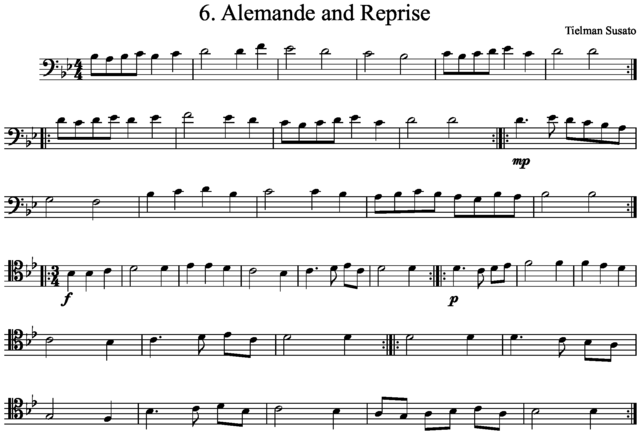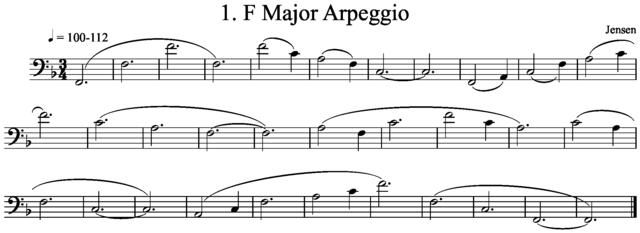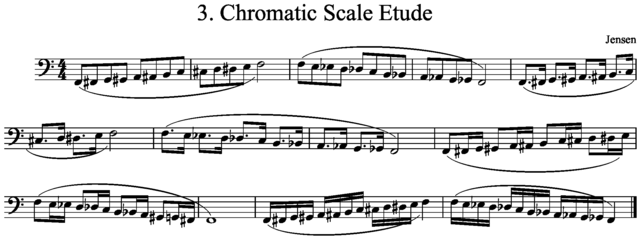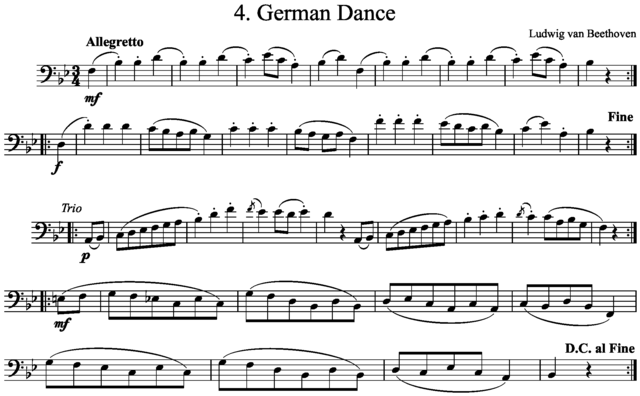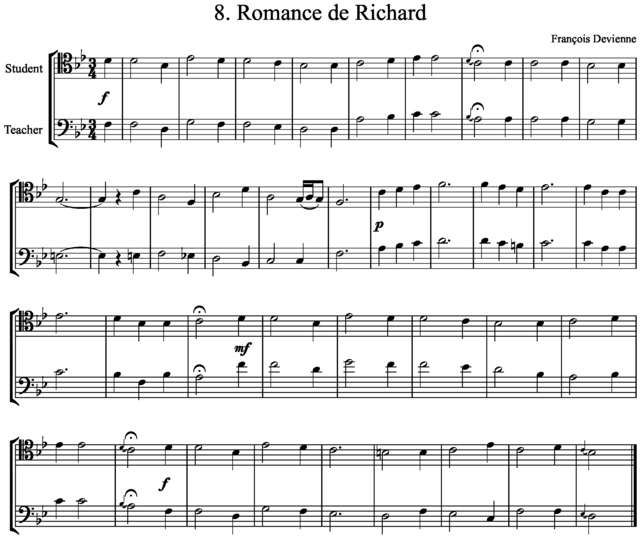The small notes before the half notes below are called grace notes. Grace notes are written in small print because their time value is not counted in the rhythm of the bar. Their value is instead taken from either the previous note (most commonly), or the following note. When the grace note has a slash through it, as in the melodic minor scale below, the rhythm is taken from the previous note so that the principal note (the note after the grace note) occurs on the beat as written. This grace note is therefore a quick note before the beat. Grace notes are called ornaments because they are not part of the essential structure of the melody.

In music written before 1800, such as the music of Mozart, Devienne, or Haydn, some grace notes take their value from the note.

If the principal note’s written value is an uneven number of beats, for instance a dotted half note in 4/4, the grace note receives two‐thirds of the value.

Very often, bassoon music will switch between the bass clef and the tenor clef right in the middle of a piece, or even in the middle of a phrase. Be ready for the tenor clef in the fourth repeated phrase below.
Pieces can also change meter, or time signature, as in this one by Susato. When the time signature changes from 4/4 to 3/4, keep the quarter note at the same tempo, but be ready to create strong beats every three beats rather than every two.
